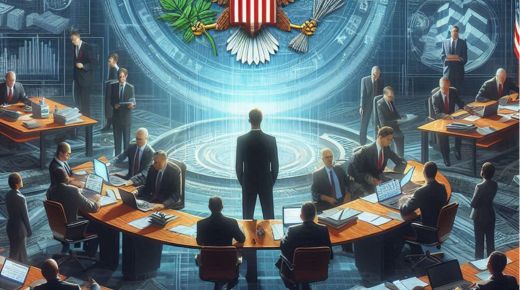
As government contracting continues to evolve, the integration of AI technologies like GovGPT with platforms such as System for Award Management (SAM.gov) is shaping the future of procurement. This collaboration aims to streamline processes, enhance transparency, and empower both agencies and contractors, creating a more efficient contracting ecosystem.
The Role of GovGPT in Government Contracting
- Enhanced Search and Discovery:
- Intuitive Search Functionality: GovGPT’s natural language processing capabilities allow users to conduct searches using everyday language, making it easier for businesses, especially small and new entrants, to find relevant contracts on SAM.gov.
- Contextual Relevance: The AI can provide context around contracts, highlighting opportunities that align with users’ expertise and past performance.
- AI-Driven Insights:
- Data Analytics: By analyzing historical data from SAM.gov, GovGPT can identify trends in government spending, popular contract types, and emerging areas of interest, helping businesses strategize their bids.
- Competitor Analysis: Users can gain insights into competitor behavior, including who is winning contracts and where opportunities may be underutilized.
- Streamlined Proposal Preparation:
- Template Generation: GovGPT can assist in creating proposal templates tailored to specific contract requirements, reducing preparation time and increasing the chances of success.
- Compliance Checks: The AI can analyze proposals for compliance with government regulations and requirements before submission, minimizing the risk of rejection.
- Training and Support:
- Resource Hub: GovGPT provides access to training materials, webinars, and guides, empowering users with knowledge on navigating the government contracting landscape.
- 24/7 Support: The AI chatbot can answer questions and provide guidance at any time, enhancing user experience and reducing barriers to entry.
- Enhanced Collaboration:
- Multi-User Collaboration: Teams can work together seamlessly within GovGPT, sharing insights, documents, and feedback in real time, improving the overall proposal development process.
- Stakeholder Engagement: The platform facilitates better communication between government agencies and contractors, ensuring that all parties are aligned throughout the contracting process.
Benefits for Government Agencies
- Improved Efficiency: Agencies can leverage GovGPT to quickly identify qualified contractors, reducing the time spent on sourcing and evaluation.
- Better Decision-Making: Access to AI-generated insights allows agencies to make data-driven decisions about contract awards and contractor performance.
- Increased Transparency: The enhanced tracking and reporting capabilities contribute to greater transparency in government spending and procurement processes.
Future Implications
- More Accessible Contracting: By simplifying the search and proposal processes, GovGPT can democratize access to government contracts, allowing more businesses to participate.
- Increased Innovation: With easier access to contract opportunities, more diverse businesses may bring innovative solutions to government challenges.
- Data-Driven Procurement: The reliance on AI and analytics will likely lead to a more strategic approach in government contracting, where decisions are informed by comprehensive data analysis.
Conclusion
The integration of GovGPT with SAM.gov is setting the stage for a transformative shift in government contracting. By harnessing AI technology to enhance search capabilities, streamline processes, and provide valuable insights, this collaboration is not only improving the experience for contractors but also enabling government agencies to operate more efficiently. As these technologies continue to evolve, the future of government contracting promises to be more accessible, transparent, and innovative, benefiting all stakeholders involved.










